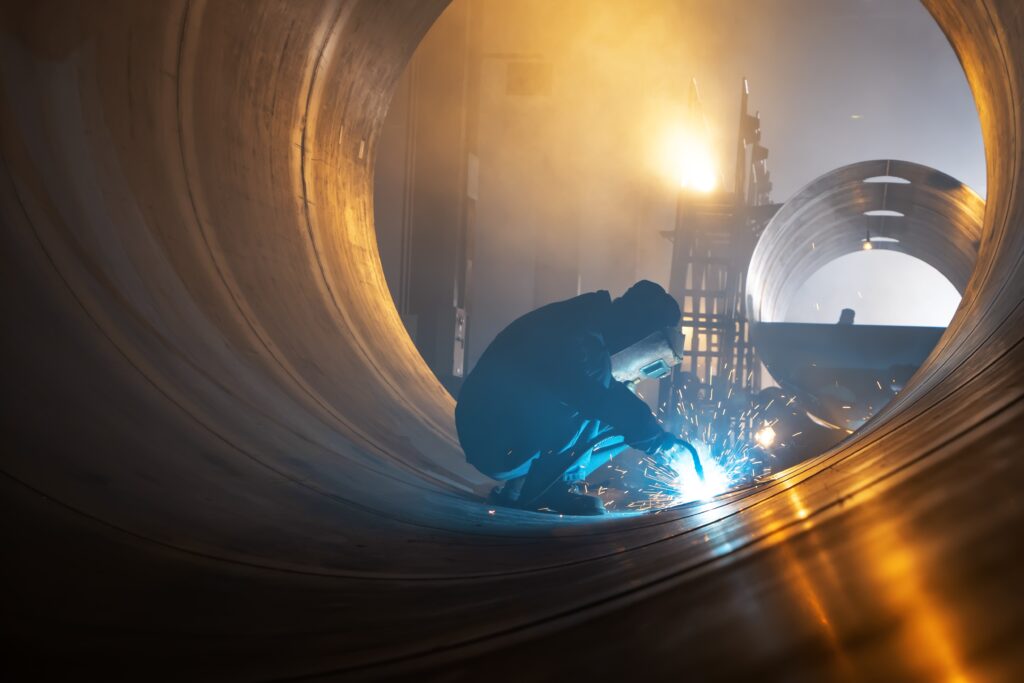
Steel is foundational to modern infrastructure. From refineries and power plants to data centers, manufacturing facilities, and critical utility systems, steel’s strength, reliability, and durability make it an essential material.
But the success of any steel-intensive project doesn’t rest on the material alone. It depends heavily on the engineering decisions that surround it.
At R.T. Patterson, we’ve spent decades working with steel in some of the most demanding environments. And if there’s one thing we’ve learned—it’s that steel is only as effective as the engineering thinking behind it.
Where Steel Projects Succeed—or Fail
Modern steel projects are far more than beams and bolts. They involve complex integration, performance requirements, and lifecycle considerations. Yet, many projects face avoidable pitfalls:
- Overdesign: Structures are often made heavier or more complex “just to be safe,” leading to unnecessary cost, increased weight, and longer fabrication times.
- Coordination Challenges: Poor integration with HVAC, electrical, and piping systems often causes costly rework during construction.
- Neglected Corrosion Protection: Coating and corrosion mitigation plans are sometimes treated as afterthoughts rather than integral parts of the design.
- Logistics Oversights: Early-stage design may ignore site constraints or delivery challenges, causing delays and field modifications.
These issues aren’t failures of steel as a material—they’re failures in planning and engineering. When engineering is disconnected from the realities of construction and operations, the project pays the price.
Engineering That Leads—Not Lags
We believe engineering should prevent problems, not simply react to them.
That’s why RTP engages with projects early—often before final drawings are completed or materials ordered. Early involvement means opportunities to add value and avoid costly issues.
Our engineering teams plan with a comprehensive lens, including:
- Load Paths, Access, and Fit-Up: Ensuring structural integrity while optimizing for efficient assembly and future maintenance.
- Fabrication and Delivery Timelines: Engineering with constructability in mind, so materials arrive when needed and fit precisely on site.
- Trade Coordination: Aligning steel work with electrical, HVAC, piping, and other trades before conflicts arise.
- Long-Term Durability: Designing corrosion protection and coatings upfront, considering maintenance cycles and environmental exposures.
Smart steel projects are engineered not only for strength but for efficiency, resilience, and repeatability across multiple projects.
Steel Is Evolving—and So Are Expectations
The infrastructure landscape today demands more from steel than ever before:
- Accelerated Build Cycles: Fast-track schedules require precise, reliable fabrication and modular assembly.
- Prefabrication Accuracy: Higher standards in off-site fabrication reduce field errors and improve safety.
- Sustainability Goals: Material optimization and lifecycle planning reduce waste and environmental impact.
- Smart System Integration: Steel structures increasingly incorporate sensors, monitoring devices, and energy infrastructure components.
These evolving requirements don’t diminish steel’s value; they raise the stakes on how steel is engineered and delivered.
At RTP, we integrate traditional structural design with modern tools such as BIM, digital modeling, and lifecycle analysis. This approach minimizes surprises, reduces change orders, and increases first-time quality on every project.
The Role of Engineering in Steel Modernization
Steel remains the backbone of modernization efforts—whether utility upgrades, industrial expansions, or the buildout of high-performance data centers and energy transition infrastructure.
But as project complexity and speed increase, engineering’s role becomes more strategic:
- Supporting collaboration between multidisciplinary teams.
- Anticipating constructability challenges before they become costly problems.
- Planning for maintenance and longevity, ensuring assets perform reliably over decades.
- Enabling innovation in design and delivery to meet evolving infrastructure needs.
Smart engineering goes beyond code compliance. It’s about understanding context, thinking ahead, and designing solutions that align with operational realities.
The Bottom Line
Steel doesn’t make a project successful.
Smart engineering does.
At R.T. Patterson, we design steel structures not just to code, but to context. We think ahead, plan precisely, and make steel work smarter for the infrastructure that keeps our world moving.
Because great materials deserve great engineering.
And every project deserves to get it right the first time.